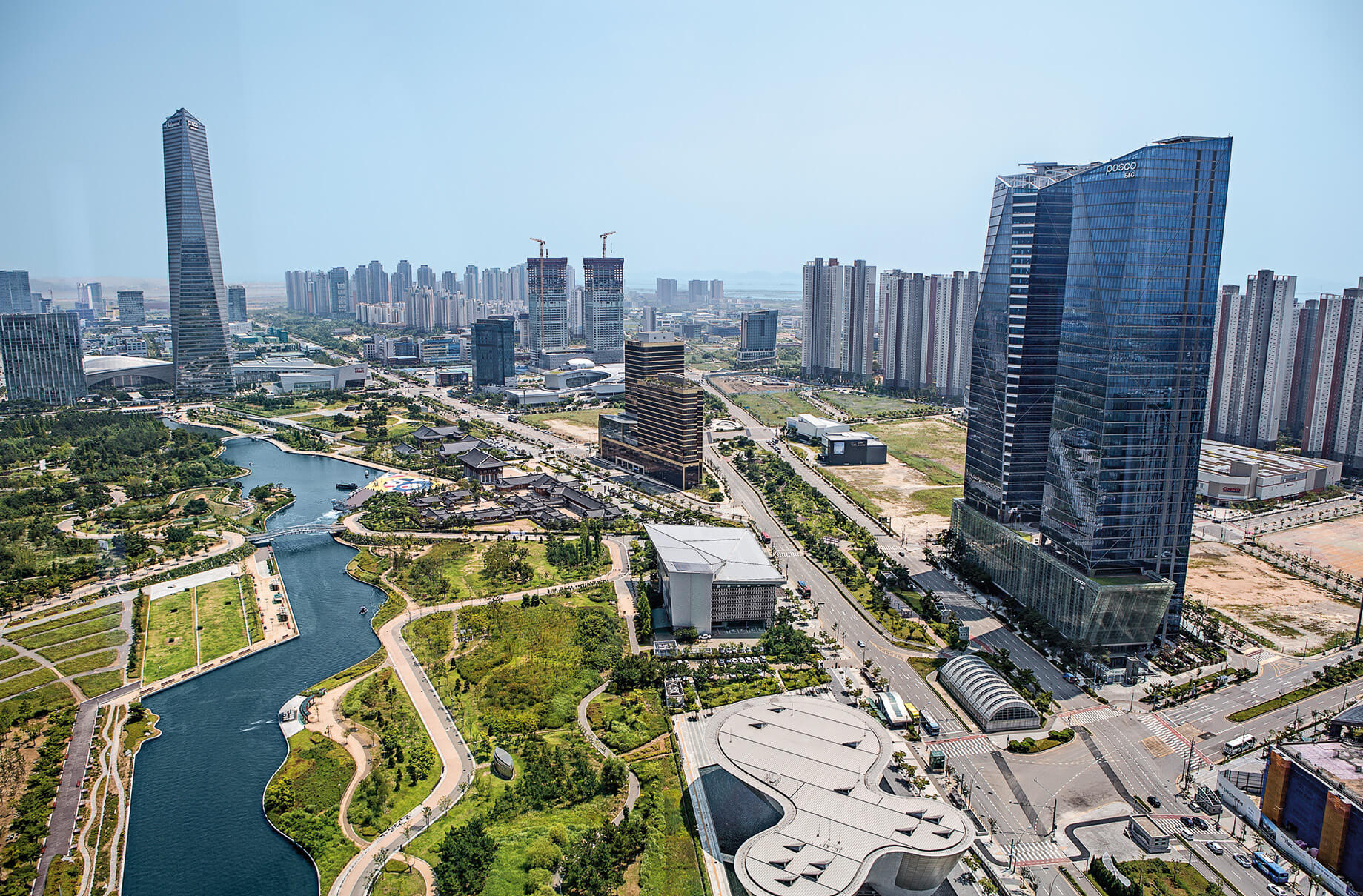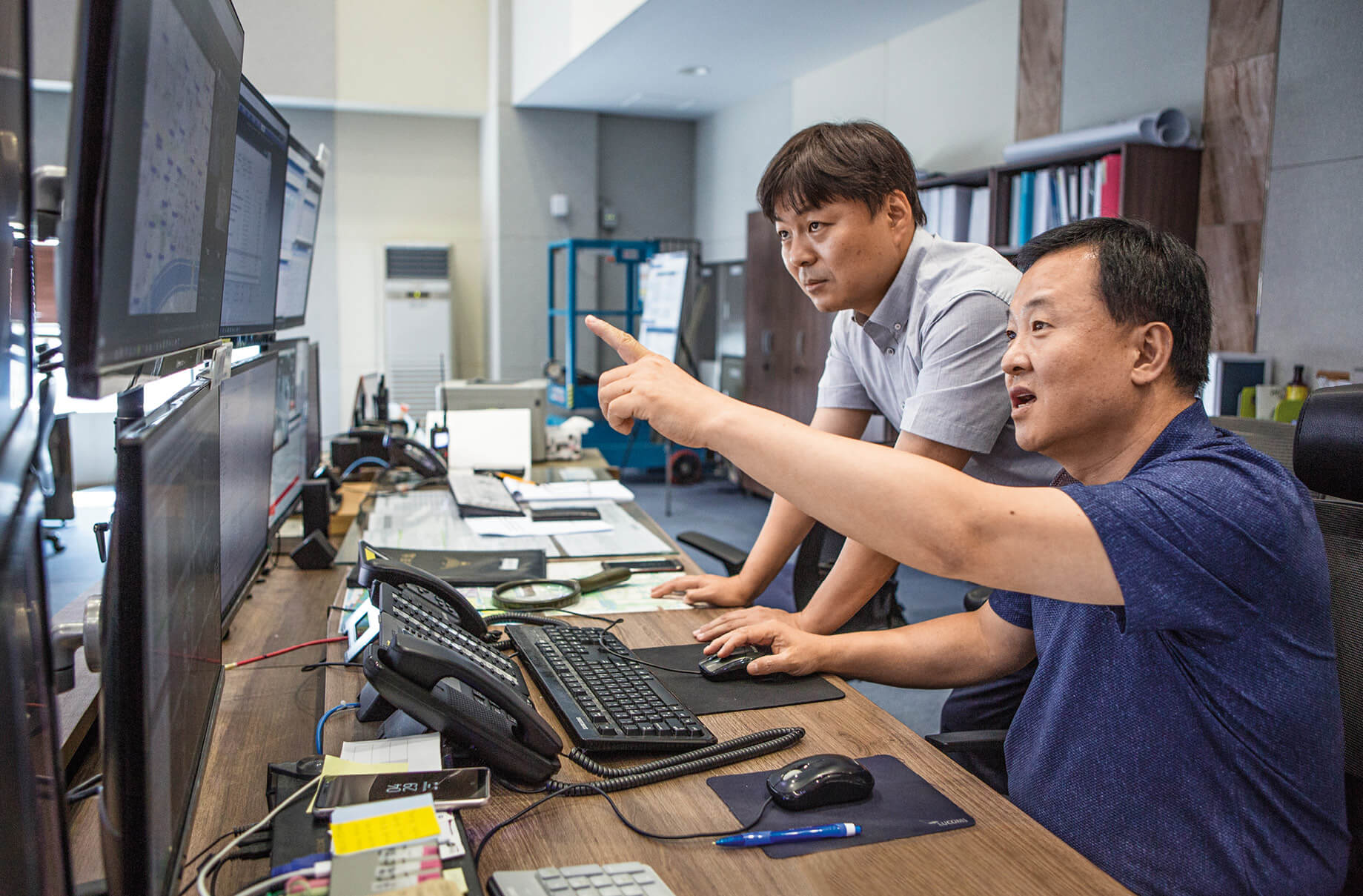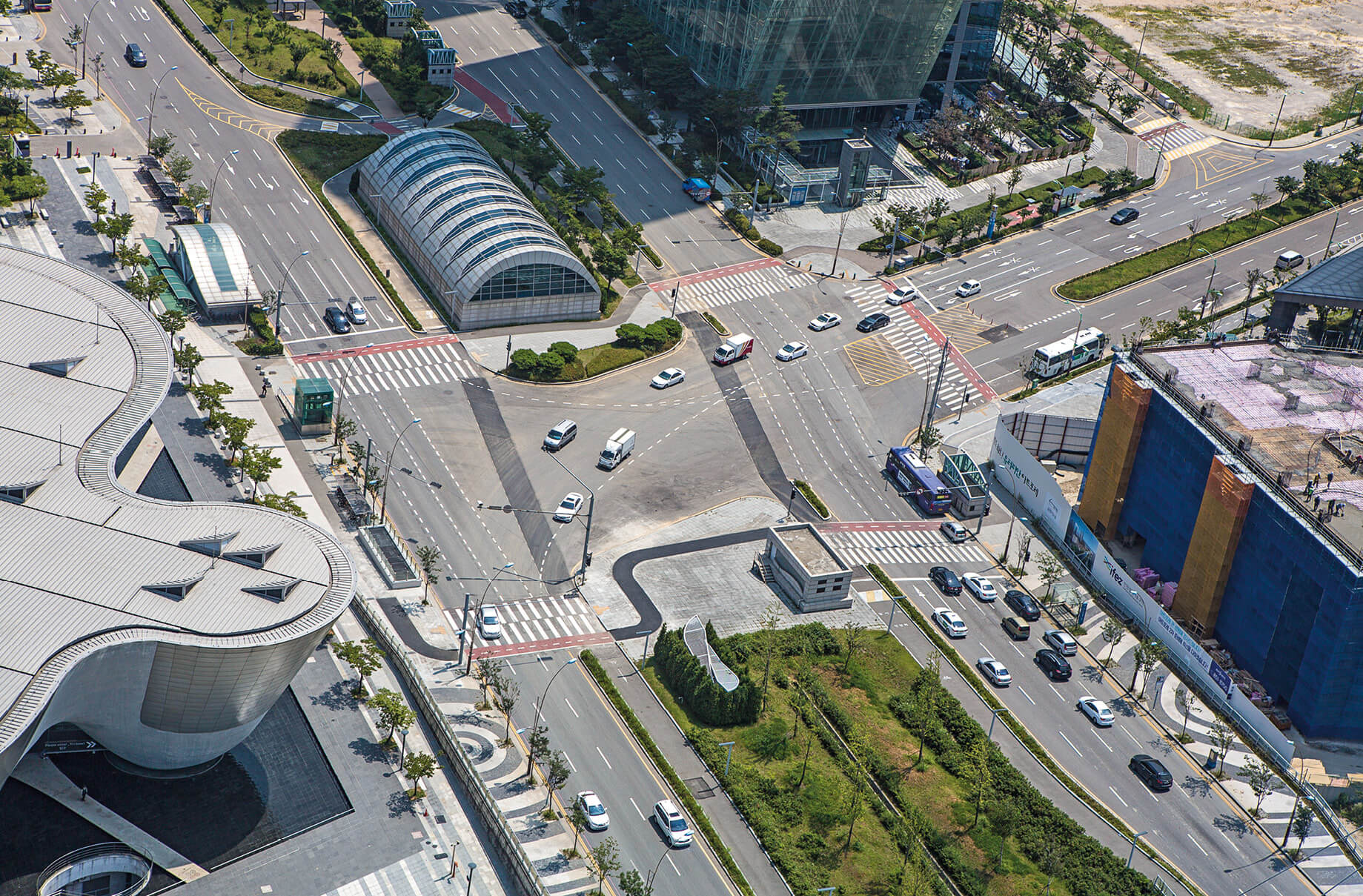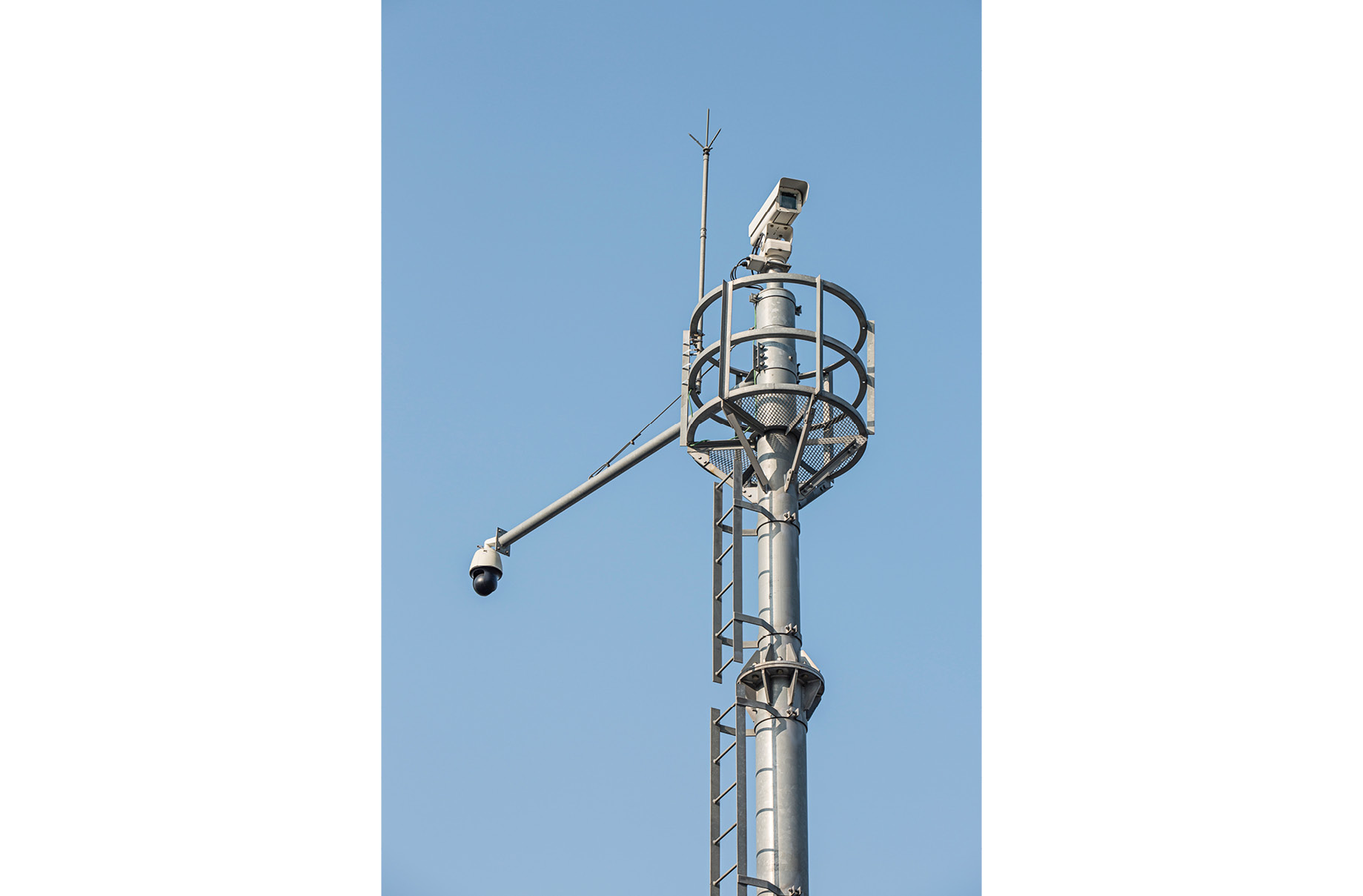It’s 7 a.m. and all is well in Songdo, South Korea. The sun has long since risen and the smell of freshly brewed coffee is wafting through a modern apartment. The blinds rise automatically, revealing the city’s 40-hectare central park in the distance. The apartment was a lucky find for Timothy from Wisconsin (39), who only recently moved to this newly developed district of the sprawling city of Incheon. Timothy works in a nursery, looking after the children of the new local residents employed at one of the large corporations just a few blocks down the road.
Songdo is certainly drawing in the crowds. Over the past few years, people from overseas and the overflowing capital Seoul have flocked to the new district and moved into its fully networked apartments. Designed as a smart city from the very beginning, the district brings together living and working spaces side by side. At first, the roads, parks, residential complexes and commercial centres existed only on the drawing board. Before construction could begin, South Korea had to bring in around half a billion metric tons of sand to reclaim land from the tidal flats in the Yellow Sea. Today, countless skyscrapers reach up to the heavens between the city of Incheon and its international airport of the same name. The smart city continues to grow.
In his apartment, Timothy saunters into the bathroom. As his favourite music plays quietly in the background, he brushes his teeth and taps a smart wall panel to check today’s temperature and news and see what the traffic is like. The panel can even offer him a second view of the extensive park around which the city is built – webcams provide live streaming.
Timothy and his neighbours enjoy the many conveniences the smart city of Songdo has to offer. Data is harvested and evaluated everywhere to make residents’ lives as easy as possible. Cameras positioned near traffic lights, for example, relay video streams to the transport control centre. Meanwhile, built-in road sensors provide measurement data on the current traffic density, and special weather sensors register temperature, wind speeds and air purity. Further information is obtained from police officers, fire crews, and private companies such as telecommunications providers.
Saving energy and resources
The urban planners’ idea was to come up with a smart city that would require just two thirds of the energy and resources consumed by similar conventional cities by evaluating residents’ activities and habits. South Korea isn’t the only place where such forward thinking is urgently needed. The United Nations predicts that by 2050 around 70 per cent of the world’s population will be living in cities – that equates to around three billion people. Experts estimate that metropolitan areas account for one third of our overall energy consumption.
In intelligent cities like Songdo, state-of-the-art technology is set to help tackle climate change. Networked information and communications technologies (ICT), cloud systems and the Internet of Things (IoT), managed via a common platform, are destined to help mega cities evolve into smart cities in the future. Engineers and IT specialists predict that smart cities are much more cost-effective to run, consume much fewer resources, and improve residents’ quality of life.



